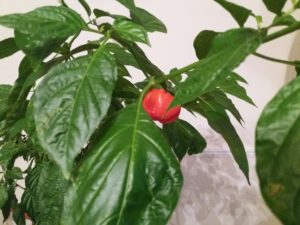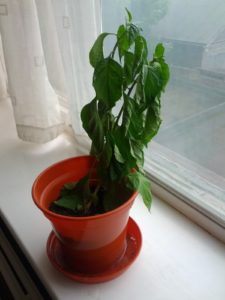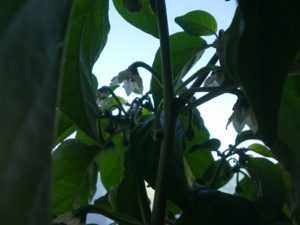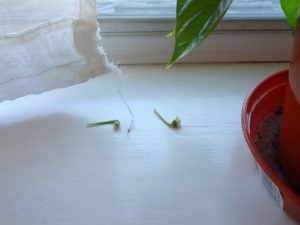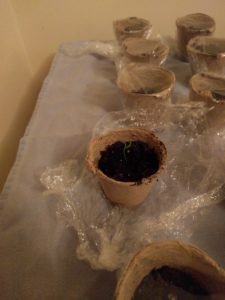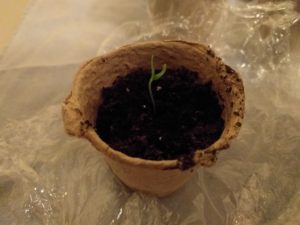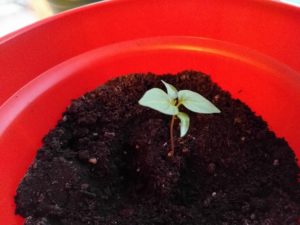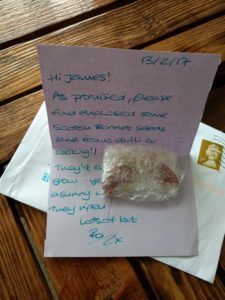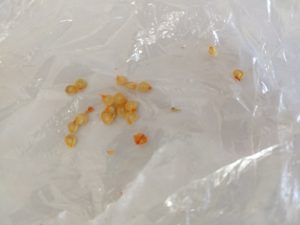Yesterday I cat-sat for the friend who is looking after my chilli plant. The thing is massive now, dominating her dining room table. And, on one of the branches, is a single red chilli. Just one chilli on one branch, that is. But it looks pretty tasty and is probably ready for harvesting soon.
Given that I can buy a bottle of Encona for a pound, the effort to grow this single Scotch Bonnet pepper seems ludicrous. And there have been all the costs – buying plant pots and compost and baby bio so I can dote on the plant with special food. This is a lot of effort for a single chilli.
This leads me to think that the farmers growing the chillis for Encona sauce are a lot better at it than me. If that was my job, the world would have just a single spoonful of Encona each year. Based on this performance, growing my own food is unlikely to be cost-effective.
Michael Pollan repeats a similar argument about cooking near the start of his book Cooked. He quotes an op-ed by the couple who write the Zagat’s guides, where they suggest “people would be better off staying an extra hour in the office doing what they do well, and letting bargain restaurants do what they do best.” Pollan sees this argument as simple division of labour, the cooks using their talents while the rest of us focus on our own skills.
Of course, Pollan spends the rest of his book explaining why we should learn to cook, but that basic argument still seems persuasive. And it is worth questioning the narrative, promoted much of the media and spearheaded by Jamie Oliver, that true freedom lies in learning how to cook dishes from scratch.
A couple of reviews have picked out a passage from Johnathan Meades’ new book, the Plagiarist in the Kitchen, where he questions the fetish for home-cooked food, “Homemade begs one question. Whose home? Have you ever actually seen people’s homes? Why should biscuits made at home be better than those baked in a factory, a factory that specialises in biscuits?”
The Angry Chef spends often attacks the guilt people are made to feel about food. While he is often attacked as an industry shill, he points out that people are too overworked and stressed to be making every meal from scratch – and being educated about ‘processed’ food, enables sensible choices to be made.
I’ve blundered along for about 20 years now, feeling guilty about the mix of home-cooked meals, fast food and tinned food in my diet. I’m still alive, so I guess I’m doing that OK. I still want to learn how to cook better, but the issue is more complicated than books on healthy eating make it sound. Cooking has to fit into a busy life, and seem worth the effort.
That said, I am looking forward to eating my single chilli soon. There’s not enough to make sauce, so I will eat it raw. But I will save the seeds for next year.
